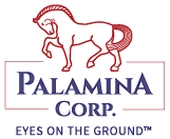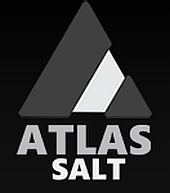 Winston Gold drills 4.4 ft of 18.8 g/t Au at Winston
Winston Gold drills 4.4 ft of 18.8 g/t Au at Winston
DRILLING INTERSECTS HIGH GRADE CUSTER VEIN INCLUDING 4.4 FT OF 18.8 G/T GOLD
Winston Gold Mining Corp. has released drill results from the historical high-grade Custer vein on the company’s wholly owned Winston gold property, near Helena, Mont. This is in addition to recently announced drill results from the Edna vein system on the same property (refer to press release dated January 23rd 2017).
Ten holes were drilled from two pads located north of the Custer Mine shaft (Refer to attached map). Highlights of the results include:
- Hole W1720 intersected 4.4 ft. averaging 0.55 ounces per ton (opt) gold, (18.86 gram/tonne gold).
- Hole W1721 hit 6.5 ft. averaging 0.19 opt gold, (6.51 g/t gold).
- Hole W1757 cut 4.5 feet of 0.47 opt gold, (16.11 g/t gold).
The intercepts indicate that the strike and dip of the Custer Vein is changing in the area of drilling, so true widths cannot be calculated. Two of the holes hit stopes in the old mine.
Historic reports indicate that the old Custer mine was worked over a strike of 2,400 feet (731 metres). Based on the drilling to date, Winston Gold Mining has demonstrated a potentially mineralized strike length of 530 ft. (161.5 metres) along the Custer Vein from hole W1724 to hole W1721 with a potential vertical extent of as much as 180 ft. (54.8 metres).
“We believed that the vein system continued below the old mine workings and our recent drill results prove this to be the case,” commented Murray Nye, CEO and Director of Winston Gold Mining. “We have confidence that there is still excellent potential to extend mineralization along strike and to depth under the Custer vein.”
Additional details of the drill intercepts (refer to attached drill plan map):
- Starting from drill Pad 16, holes W1724 and W1725 roughly intersected the 336 ft. level of the old mine workings.
- W1724 intersected 2 ft. averaging 0.09 opt (3.09 g/t) gold and hole W1725 cut 2 ft averaging 0.20 opt (6.86 g/t) gold.
- Moving to southwest to drill Pad 14, hole W1760 broke into a 15 ft. (4.6 metre) void with no mineralization in the hanging wall. Hole W1758, on the same drill pad, intersected the vein 75 ft. (22.8 metres) southwest of W1760. It hit 4 ft. averaging 0.08 opt (2.74 g/t) gold.
- Hole W1757, also on drill pad 14, intersected the vein 62 ft. (18.9 metres) farther southwest of hole W1758. It hit 4.5 ft. averaging 0.47 opt (16.11 g/t) gold. These last three holes pierced the vein between the 300-and 400 ft. levels of the mine. Further to the southwest, the intercepts pierce the vein below the 400 ft. level.
- On Pad 15, hole W1720 pieced the vein 141 ft. (43 metres) southwest of W1757 and 90 ft. (27.4 metres) lower. It intersected 4.4 ft. averaging 0.55 opt (18.86 g/t) gold. Hole W1721 pierced the vein 62 ft. (18.9 metres), southwest of W1720. It hit 6.5 ft. averaging 0.19 opt (6.51 g/t) gold.
- Hole W1722 pierced the vein 80 ft. (24.4 metres) southwest of W1721. It hit a large structure but assays were low grade averaging 0.03 opt (1.02 g/t) gold over 11 ft. W1723 pierced the vein 56 ft. (17 metres) southwest of W1722. It also hit a structure with assays averaging 0.027 opt (0.94 g/t) gold over 11 ft.
“Our first phase drill program was a great success,” said Mr. Nye. “We drilled a total of 33 holes totaling 12,428 ft. (3,788 metres) and have confirmed the existence of two high-grade vein systems on our property.”
A Phase-2 drill program is now underway and has been designed to continue to test and expand the Custer Vein under the historic workings.
Refer to chart below for details of the drill holes discussed in this release.
Hole DrillPad From(ft).To(ft.)Interval (ft.)/(m) Gold(OPT)Gold(g/t)
W1720 15 586.9 591 4.4 1.34 0.55 18.86
W1721 15 612.5 619 6.5 1.98 0.19 6.51
W1722 15 610 621 11.0 3.04 0.03 1.02
W1723 15 624 635 11.0 3.04 0.027 0.93
678 685 7.0 2.13 0.038 1.30
W1724 16 241 244 2.0 0.61 0.09 3.09
W1725 16 348 350 2.0 0.61 0.20 6.86
W1757 14 442.5 447 4.5 1.37 0.47 16.11
W1758 14 426 430 4.0 1.22 0.08 2.74
W1759 14 Stope
W1760 14 Stope
*Stope = Intersected mined out historic workings - no results
The Winston Gold Project is central to a historic precious and base metal mining district in which most of the ore was mined from tightly structurally controlled high angle fissure veins and lode/replacement zones. Reports indicate that more than 100,000 ounces of gold was recovered from these underground mines in the late 19th to early 20th century from about 150,000 tons of ore. (Earle, 1964; Schell, 1963).
Sampling Methodology, Chain of Custody, Quality Control and Quality Assurance
All sampling was conducted under the supervision of the Company’s project geologists and the chain of custody from the drill to the sample preparation facility was continuously monitored. A blank or certified reference material was inserted approximately every tenth sample. The samples were delivered to Norris Labs Inc., in Norris Montana where they were crushed, pulverized and the sample pulps digested and analyzed for gold using fire assay fusion and a 50g gravimetric finish.
Qualified Person
The scientific and technical content and interpretations contained in this news release have been reviewed, verified and approved by Dr. Criss Capps PhD. P.Geol., an independent consultant to Winston Gold Corp. Dr. Capps is a Qualified Person as defined in National Instrument 43-101 Standards of Disclosure for Mineral Projects.
About Winston Gold
Winston Gold is a junior mining company focused on advancing high-grade, low cost mining opportunities into production. Towards that end, the Corporation has acquired two under-explored and under-exploited gold/silver mining opportunities, being the Winston Gold project near Helena, Montana, and the Gold Ridge project, near Willcox, Arizona.
http://winstongoldmining.com/news/
































